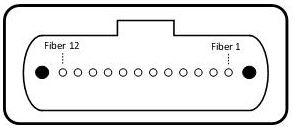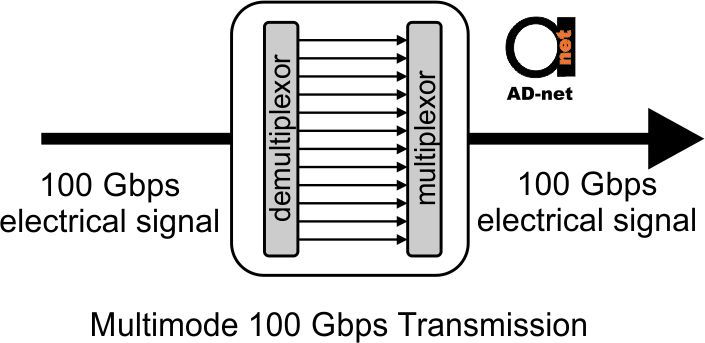In previous articles we defined what dispersion is and how it affects an optical link, also showed differences between modal dispersion and chromatic dispersion.
Now do you know, that for really high speed links, there is a also a skew as consideration factor?
In general, one might think about skew as dispersion as well, as after all it reflects in travel in time as well – just as dispersion does.
However, what skew is – is a difference in travel time measured in nanoseconds (ns) traveling on different fibers. Aha!
Have you seen how 40G QSFP module looks like? Here is how:

Figure 1: MPO connector of QSFP fiber module.
That’s interesting, right? 12 fibers here!
Is this difference in travel times becomes really important when dealing with multimode fiber transmitting on 40Gbit/s or 100Gbit/s speeds.
In these 2 speed transmission electrical signal get demultiplexed into 4 or 10 different signals.
Like you can see in below figure, to get 100Gbit/s link sent over fiber, you need 10 different streams of 10Gbit/s signals. This is where skew must be limited as much as possible, otherwise these streams can’t be accurately multiplexed back in receiver side.

Figure 2: Principle of 100Gbit/s link multiplexing and de-multiplexing.
For such datarate maximum skew value is <79 ns.
Considering, that such speeds at the current moment of writing usually are required in datacenters, where distances are short, that’s still OK.


